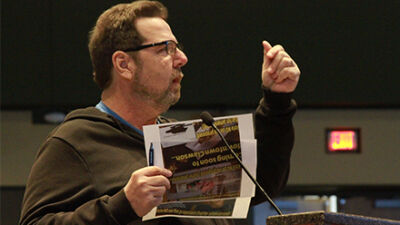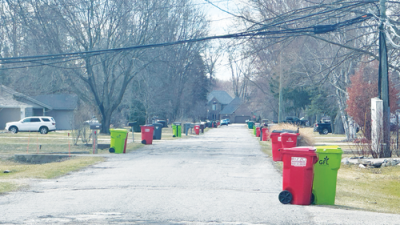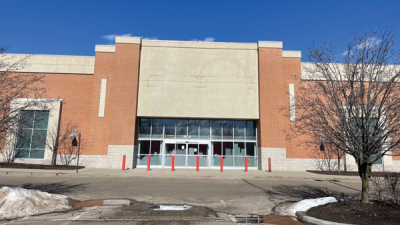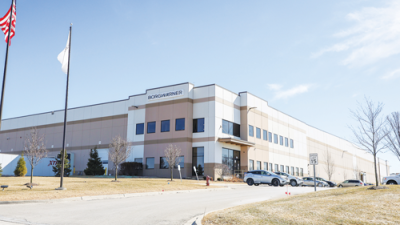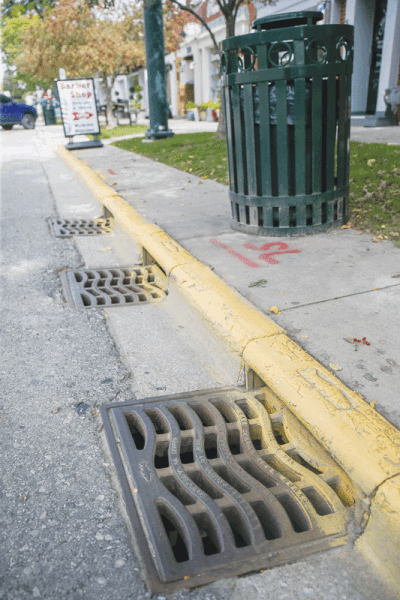
At a recent workshop, the Birmingham City Commission discussed the water and sewer system. Birmingham recently experienced a total of 178 reports of flooding.
Photo by Patricia O’Blenes
BIRMINGHAM — The Birmingham City Commission held a workshop Sept. 11 to discuss water, sewers and an Aug. 24 rain event that generated a total of 178 reports of flooding in Birmingham.
Birmingham City Engineer Melissa Coatta gave a brief overview of how the city’s water and sewer system works.
According to Coatta’s presentation, Birmingham owns over 100 miles of water mains within the city. The city has five Southeastern Oakland County Water Authority connections — four located along 14 Mile Road and one on Quarton Lake.
The city has two water tanks that hold 500,000 gallons of water. There are two pumps at the bottom of the tanks that lift the water up to the top of the tower in the evening, and then it slowly gets released for usage throughout the day.
Coatta shared that in order to get from the city’s water main to private property, a water service connection at the water main goes onto private property, then a water service lead goes into the house so it can be serviced internally.
Coatta shared that approximately 116 miles of sewers exist in Birmingham, ranging from 6 inches to 72 inches.
Birmingham has three types of sewers: storm sewer, sanitary sewer and a combined sewer, which is entered by both rainwater and wastewater.
All sewers are gravity fed; there are no pump stations or lifts.
“Essentially, everything goes from upstream downstream via gravity, down to the lower portion of the sewer,” Coatta said at the meeting.
The design standards for Birmingham’s sewers are for a 10-year storm event, meaning there is a 10% probability of being equal or exceeding capacity.
Coatta shared additional information on how storm sewers work.
“A catch basin collects the rain runoff, and it drains via gravity to the storm sewer itself,” Coatta said at the meeting.
The outlet for a storm sewer is either the Rouge River or a combined system.
Residents may notice Birmingham having restrictive covers. Coatta explained that these are intended to “restrict the flow going into the sewer system.” While this helps prevent exceeding the sewer capacity, it can lead to street flooding.
Properties have sanitary sewer leads that can connect to wastewater, footing drains or a sump pump drain.
“For our combined system, the city’s sewer does drain to the Oakland County Water Resource Commissioner system via gravity itself,” Coatta said at the meeting.
The city is located in two sanitary sewer districts: Evergreen-Farmington Sanitary District and the Southeast-Oakland District/George W. Kuhn Drainage system. It then goes to the Detroit Wastewater Treatment Plant, owned by the Great Lakes Water Authority.
Retention treatment basins are not needed on dry days, but they are used during rain events to keep the system from going over capacity.
“If it’s over capacity, it will essentially get diverted to … a retention treatment basin,” Coatta said at the meeting. “It is treated there, and then that water overflow goes into the river itself.”
The Aug. 24 rain event
On Aug. 24, Birmingham saw the highest intensity rain event over a year’s time.
Fire Station No. 1 recorded the rain at its highest intensity, 10:20-10:35 p.m., at 3.62 inches per hour. The station exceeded a 500-year storm event.
Fire Station No. 2 recorded a little bit more rain at the beginning of the day on that side of the city, as well as a little bit less intense of an evening. That station experienced over a 400-year storm event.
The city received a total of 178 reports of flooding. Reports included surface flooding, clean water flooded into a basement, and sewer backups.
Steps by the city
During road reconstruction, Coatta said, the Engineering Department reviews existing sewers and checks the capacity of the sewers.
The department is also currently looking for ways to incorporate green infrastructure, such as a bio-swale and rain gardens.
She said recent maintenance includes the cleaning of the sewer and catch basins.
Next steps for the city include reviewing the types of flooding and investigating basement flooding areas. They also plan on studying stormwater management features, sewer relief, and separating the combined sewer.
Increasing public education is also one of their goals.
Coatta also outlines some next steps that residents can take: fill out the flood tracking form on the city’s website, know where the sewer lead is, televise the sewer lead on their property, and avoid pouring certain things down drains, including grease and oil.
Assistant City Manager Melissa Fairbairn shared information about sewer backup claims, including alerting residents to the 45-day deadline required for a claim following a backup. The backup claim deadline for the Aug. 24 rain event is Oct. 8.
For more information on filing sewer backup claims, visit, bhamgov.org/riskmanagement.
Commissioner comments and questions were followed by comments and questions from the public. To hear this feedback, the full workshop can be watched at vimeo.com/858838068.
“The entire commission and staff has enormous sympathy for people who had sewage in their basements,” Mayor Therese Longe said. “It’s the worst, and we get that, and we’re looking at all options that we can control and networking with our Oakland County system for things that they can control.”
 Publication select ▼
Publication select ▼
















